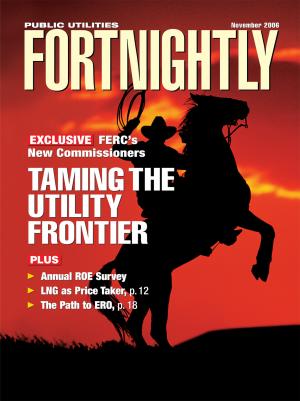Critics say its new budget and business plan could simply duplicate the work of RTOs.
Bruce W. Radford is editor-in-chief of Public Utilities Fortnightly.
Last winter, when the Federal Energy Regulatory Commission (FERC) was considering the criteria needed to qualify as the nation’s one-and-only Electric Reliability Organization (ERO), some industry players had thought the commission should favor regional transmission organizations (RTOs) for the job of regional enforcement of reliability standards.

FERC demurred.
On one hand, the commission did recognize the “potential benefits” of drawing boundaries for regional reliability zones that would match the footprints of the existing RTOs, or independent system operators (ISOs). After all, Congress itself had not barred ISOs or RTOs from serving as an “RE”—that being any “regional entity” to which the ERO would delegate enforcement authority—as the term is defined in sec. 1211 of the 2005 EPACT law, now codified as Federal Power Act sec. 215.
Nevertheless, FERC saw an inherent conflict of interest in allowing RTOs to oversee their own compliance with reliability standards. It acknowledged that it could not legally exclude RTOs or ISOs, but ruled that any regional grid system operator would have to meet a heavy burden to prove its mettle to take on the additional job of regional reliability enforcement. (See Docket No. RM05-30, Order No. 672, Feb. 3, 2006, pp. 263-269, 114 FERC ¶61,104.)

